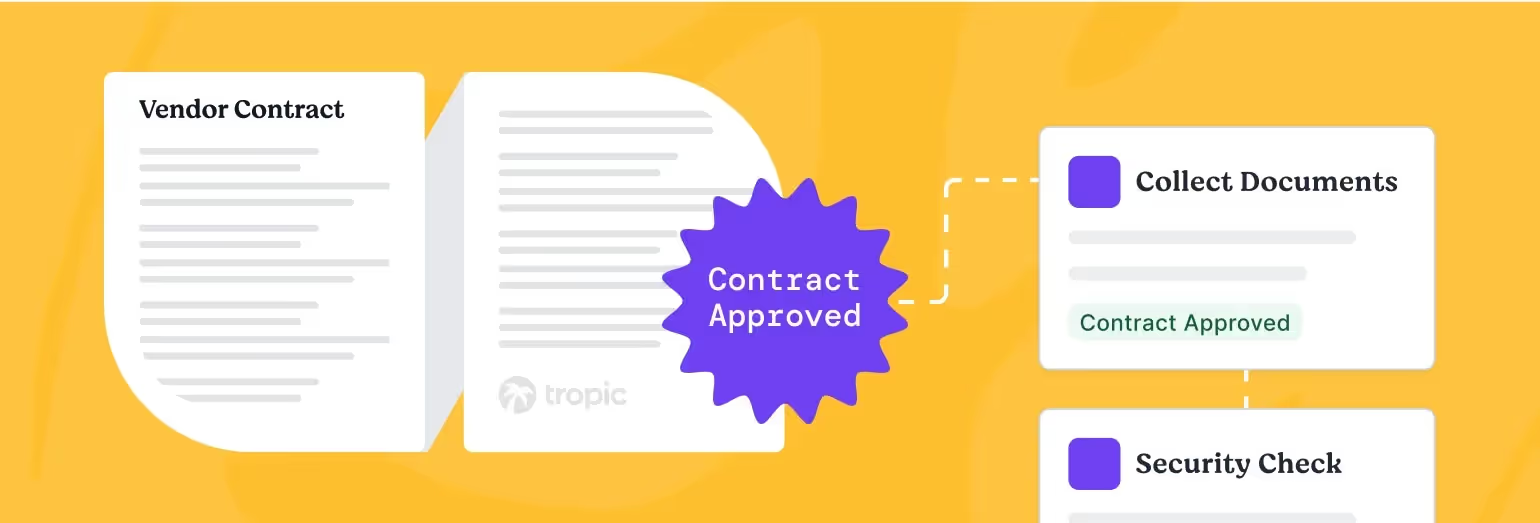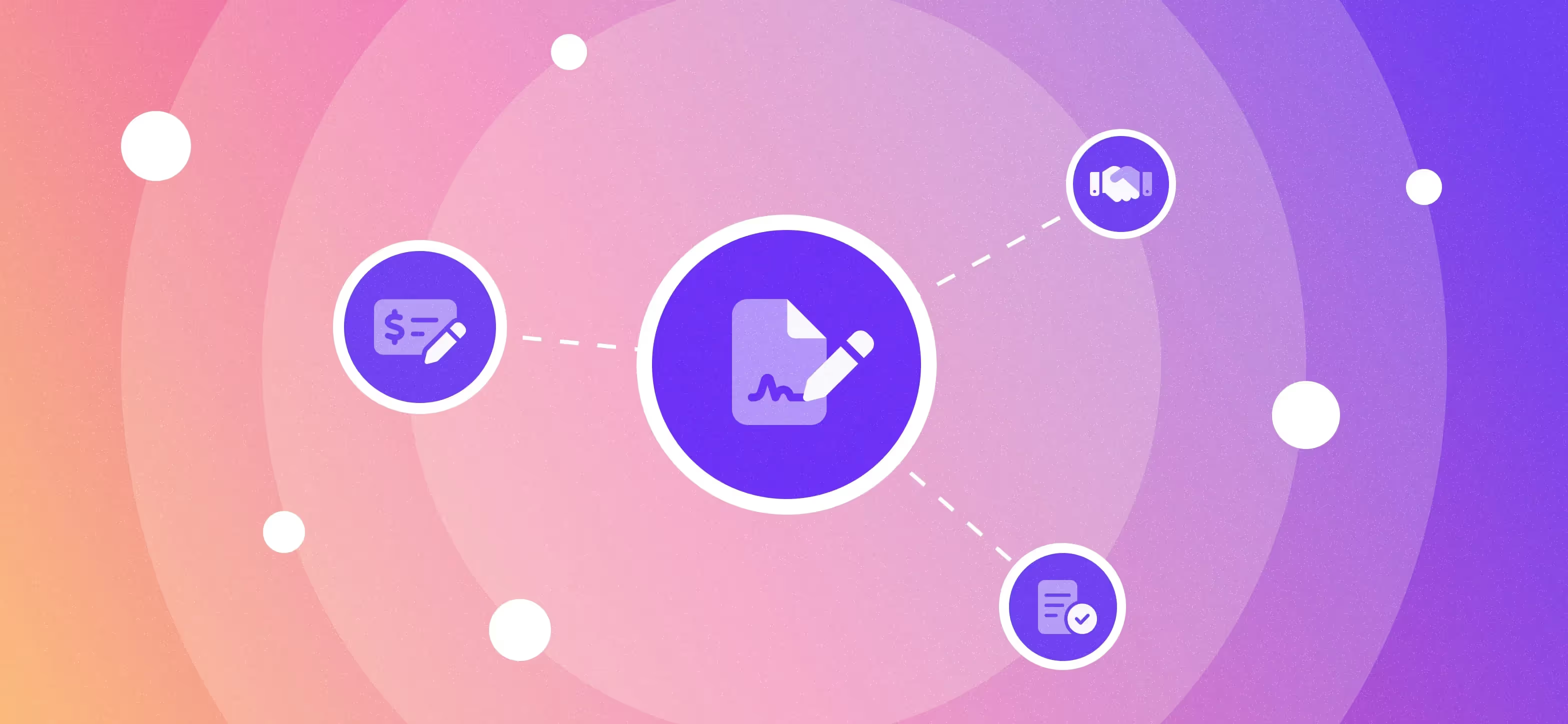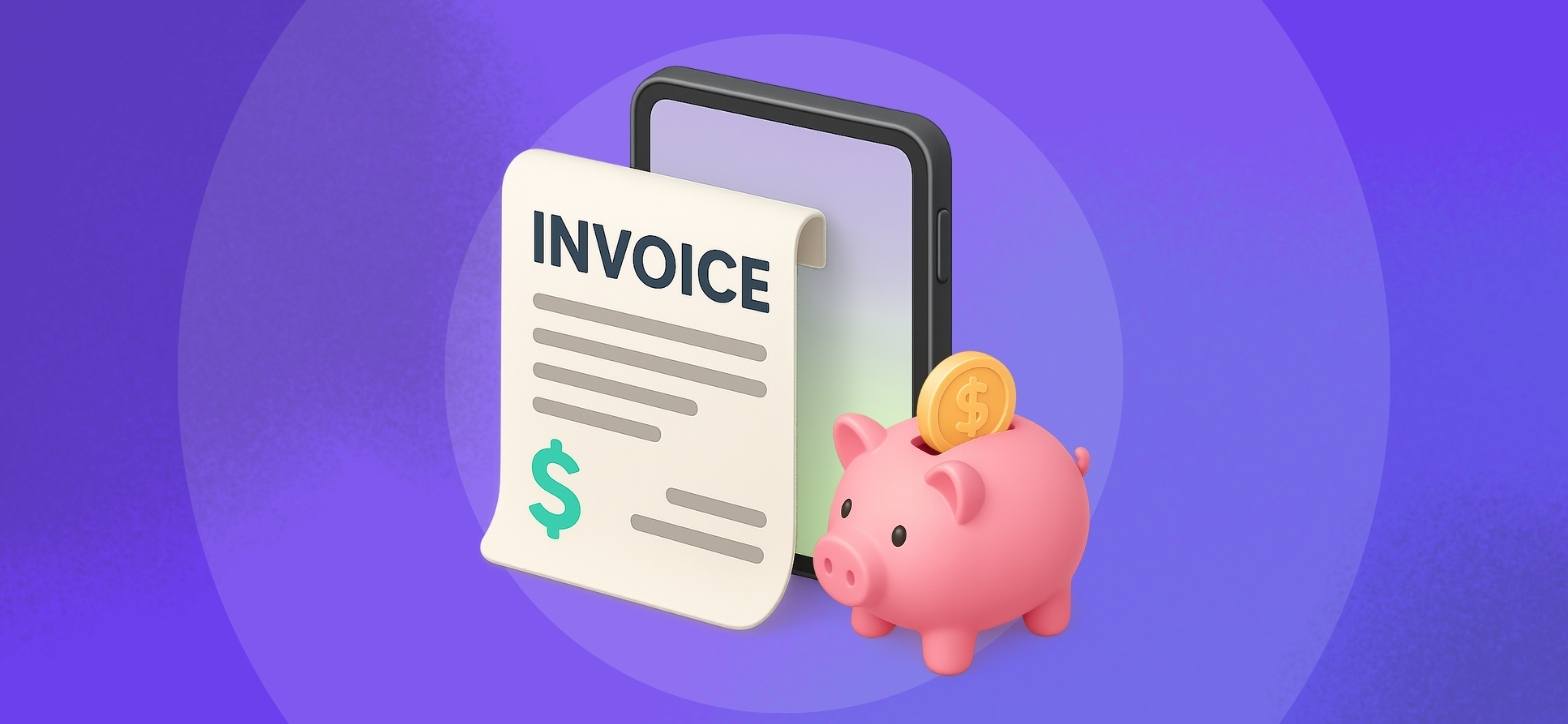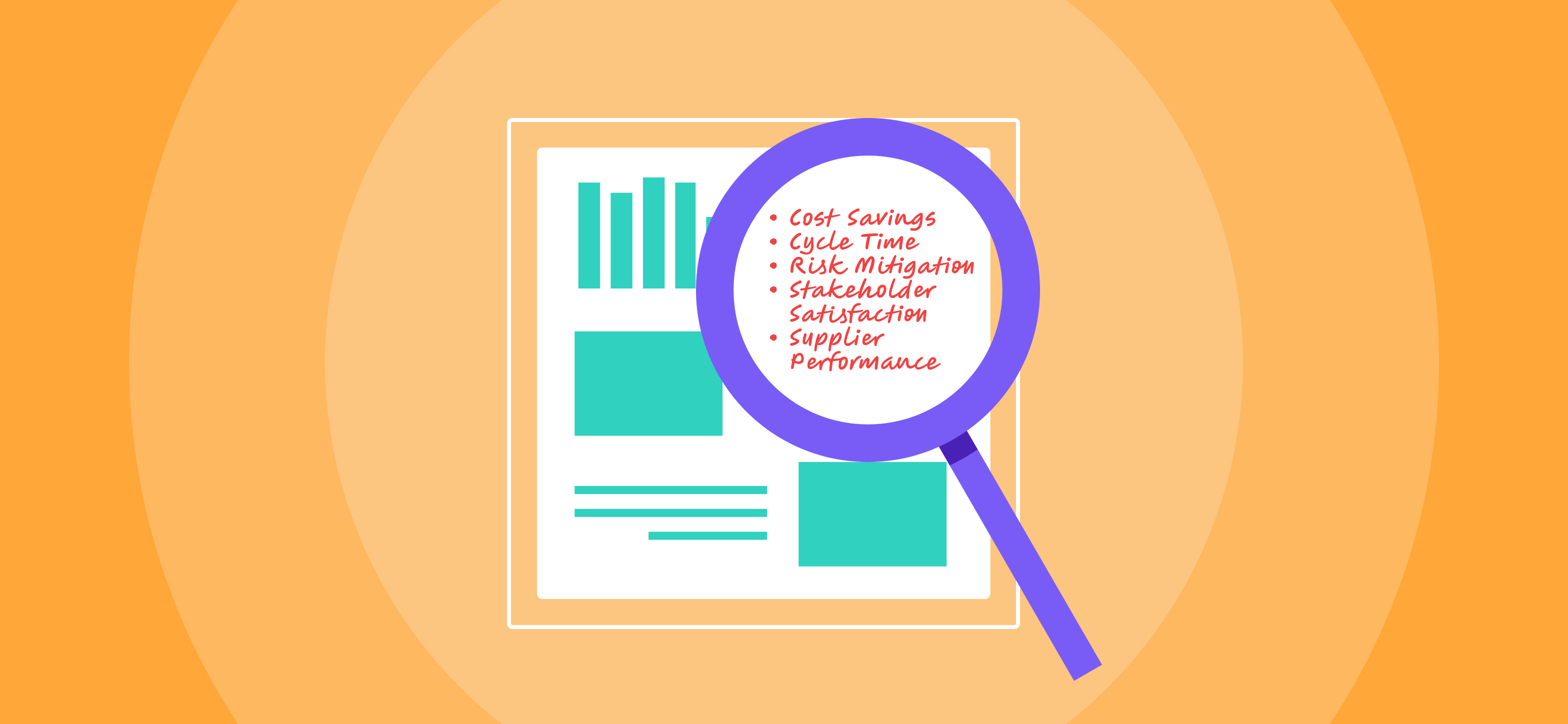This post was updated in October 2024 for accuracy and relevance.
Vendor contract management is the process of overseeing and directing all aspects of an organization's contractual dealings with its suppliers.
It ranges from contract creation, negotiation, execution, and analysis to ensure all contractual agreements are met and optimal performance is achieved.
The Greek philosopher Plato recognized the importance of contracts (and we bet he never even got a surprise bill from a SaaS vendor whose contract he failed to properly manage). With the complexity of modern SaaS delivery models, vendor contract management must be an integral part of your SaaS Ops, procurement, and vendor relationship management processes. Plato would certainly approve.
In this article, you'll learn:
- What contract management entails
- Key components of vendor contract management
- The benefits it brings to your business
- Common challenges
- The types of vendor contracts
- Best practices for effective vendor contract management
- How to improve your contract management processes
- How to choose the right vendor contract management software

Vendor management vs. vendor contract management
Vendor management and vendor contract management are closely related, but they’re still two distinct processes that are worth understanding.
Vendor management refers to the entire process of managing the entire vendor lifecycle, from discovery to renewal/expansion/termination, with vendors or suppliers. It includes activities like:
- Researching and sourcing vendors
- Getting quotes for pricing, capabilities, turnaround times, and quality of work SLAs
- Negotiating contracts and ensuring all agreements are mutually beneficial
- Onboarding the vendor and training employees who will work with them
- Managing relationships—evaluating performance, adhering to payment terms, and communicating effectively with vendors about the day-to-day service they’ll provide
Essentially, vendor management is all about ensuring that you’re getting the most out of your vendors.
Vendor contract management is just a piece of that puzzle.
It specifically focuses on the management of contracts between your company and its vendors. Vendor contract management extends through creation, execution, analysis, and renegotiation of contracts with vendors. It ensures that both parties meet their respective obligations and that the terms of your SaaS agreements are fulfilled in a way that is beneficial for your company.
As we’ll discuss in the next section, vendor contract management is essential for mitigating risks, ensuring compliance, managing costs, and driving service delivery efficiency.

Benefits of effective vendor contract management
Contract management is clearly important, but what specifically can you expect to get out of improving your processes? Here are some major benefits to investing in better contract management that will help you build a business case for it.
Cost management
Proper contract management helps to control costs by ensuring vendors meet their contractual obligations, deliver on time, and charge the agreed prices. Done correctly, it also gives you a complete view of your software spend across your organization, helping to track down duplicative/redundant vendors, project costs, and optimize your contracts to keep costs in check.
Risk mitigation
It helps in identifying potential risks in advance, such as contract non-compliance, poor vendor performance, vendor insolvency, vendor concentration (or, too much dependence on a single vendor), security risks, and other business-critical risks that can’t be ignored.
Compliance
A buttoned-up vendor contract management process ensures that all agreements comply with legal requirements, internal policies and procedures, and industry standards. This reduces the risk of fines, reputation damage, and other negative legal outcomes.
Vendor performance
Contract management, as part of your wider SaaS vendor management function, allows you to monitor and manage the performance of your vendors. By tracking the performance and ROI of each vendor relationship closely, you have more leverage to modify or break the contract if service level agreements are not met.
Strategic relationships
Effective vendor contract management can help build strong, strategic relationships with vendors. This is vital for driving better negotiation outcomes during renewals, improving overall service levels, and potentially getting better pricing in the future.
Key Components of Vendor Contract Management
1. Contract Creation: Drafting and negotiating contracts with vendors
Contract creation is the first and one of the most critical phases of vendor contract management. It involves drafting agreements that define the terms, conditions, and obligations of both the vendor and the organization. This phase typically covers essential details such as payment terms, the scope of services or goods provided, timelines, and performance metrics. Effective contract creation involves collaboration between legal, procurement, and vendor management teams, and may require multiple negotiation rounds to ensure all parties agree to mutually beneficial terms. A well-drafted contract minimizes the risk of disputes, ensures legal compliance, and clearly outlines the relationship's operational framework.
2. Contract Monitoring: Tracking key dates, deliverables, and compliance terms
Once a contract is in place, ongoing monitoring is vital to ensure compliance with agreed-upon terms. Contract monitoring involves tracking deadlines for deliverables, payment schedules, and key performance indicators (KPIs). Automated contract management systems help track these elements, triggering alerts for upcoming milestones like service level agreements (SLAs) or deadlines for renewing certifications. It’s important to monitor both vendor performance and adherence to contractual obligations, as well as internal compliance, such as timely payments. Effective monitoring helps prevent contract breaches and promotes accountability.
3. Contract Renewal & Termination: Understanding renewal terms and managing contract termination
Contract renewal and termination management is crucial to avoid lapses in service or missed opportunities for renegotiation. Many vendor contracts contain automatic renewal clauses, which can result in renewed terms that are less favorable if not addressed proactively. It is essential to understand and manage renewal windows well in advance. On the flip side, termination procedures must be clearly outlined in the contract, including notice periods, penalties for early termination, and any obligations post-termination, such as data handover or transition services. Proactive renewal management ensures cost savings and continued value, while well-handled terminations minimize disruptions and legal risks.

4 Common SaaS models and how they impact contracts
At the risk of oversimplifying things, contract management is essentially about figuring out what you pay your vendor and what they need to deliver. Pricing is a major part of contracts, and while it’s not the only thing to consider, it almost always drives the rest of the conversation.
The old phrase, “you get what you pay for,” applies in a big way here. The more you pay, the more you can push for things like SLAs, extra support, additional features, etc.
That’s why it’s important to get your head around what types of pricing models exist and how they can impact other parts of your contracts. Here are a few common pricing models and how they play into contract management.
1. Seat-based contracts
Seat-based SaaS contracts refer to licensing agreements in which access to the software service is priced on a per-user basis. A seat represents a license for one user to access and use the software.
For example, if a company purchases 50 seats for a SaaS product, it means 50 users from the company can access and use the software. The company can add or remove seats as needed, typically with the cost scaling up or down based on the number of seats. In some cases, there may be a minimum number of seats you must purchase before dropping to a lower tier of service.
This type of contract provides flexibility for businesses as they grow or downsize, and it allows software providers to scale their revenue in line with their ability to provide more value to each customer.
2. Usage-Based contracts
Usage-based SaaS contracts mean the cost is determined by how much a customer uses the software. Instead of a fixed monthly or annual fee, the pricing model is flexible and directly tied to the level of usage.
This usage could be measured in various ways depending on the nature of the software, such as the number of API calls made, the amount of data stored or processed, the number of transactions handled, and so on.
Usage-based contracts offer a lot of flexibility for businesses, as they only pay for what they use. This can be cost-effective for workflows and tasks that lend themselves to variable software usage needs. It also makes it easier to scale up or down based on usage.
The downside is that it also requires careful monitoring to prevent unexpected costs if usage significantly increases.
3. Flat rate contracts
As the name implies, flat-rate contracts give you access to a SaaS product at a single fixed price. You pay the contracted amount each pay cycle and get access to the features you paid for.
In general, flat rate contracts benefit from simplicity, but you’ll likely only see them in simple products. Most SaaS products, especially ones targeted at mid-market and enterprises, will have much more complicated pricing structures.
4. Tiered contracts
Tiered contracts are arguably the most common type of SaaS contract. They’re often inclusive of seat-based or usage-based pricing too—how many seats you buy or how much you use the product determines what tier you’re in.
For example, let's say an automation company offers a free plan for those who need simple automations built. They might also have a beginner's plan at a low rate for those who need more complex automations, and a professional plan (with a heftier price tag) for those who need all the bells and whistles the automation company offers. In this case, the contract is some combination of a tiered and usage-based system, meaning you have to jump up to another plan to accomplish certain kinds of tasks.
Tiers aren’t just about pricing. You generally get more features in high tiers, as you’re paying more for the software. Moving to a higher tier gets you more functionality, while dropping to a lower tier will likely take them away.
Who is responsible for vendor contract management?
In large enterprises (more than 1,000 employees), dedicated procurement teams often handle vendor contract management in collaboration with legal, finance, IT/security, HR, etc.
That’s all well and good for them, but what about the mid-market and startups who may not always have that luxury?
From what we’ve seen, it’s usually a combination of people from security, finance, operations, HR, IT, and even departmental/team leads. In these situations—minus a dedicated procurement function—individuals from these teams will try to get their arms around contract management on top of everything else they have to do.
In many of these cases, no one actually owns the entire contract management function. It just falls to whoever picks it up. And, you guessed it, that leads to some serious challenges for managing contracts.

Common vendor contract management challenges
In companies where vendor contract management is handled by a hodgepodge of different teams, it’s easy for mistakes to be made and allowed to compound. Even in established orgs with high levels of procurement maturity, these challenges exist.
Let’s look at a few of the most common contract management pitfalls. If you realize your team is dealing with some or all of these challenges, this will help you build a business case for stronger contract management practices.
Lack of a centralized system
One of the most common mistakes is not having a centralized system for managing contracts. This can lead to disorganization, lost contracts, missed renewals, and a lack of oversight of contract performance.
It also leads to costs spiraling out of control due to high amounts of shelfware and redundant tool spend. There’s no oversight on what gets purchased, so you end up in situations where every department uses its own project management system despite very little difference between the solutions.
Lack of a centralized procurement system is one of the biggest culprits behind our finding that most companies are overpaying for software by about 30% on average.
Poor negotiation
Teams that don’t have the bandwidth or know-how to negotiate SaaS contracts can get locked into some bad contracts. This can lead to overpricing, inadequate service level agreements (SLAs), or insufficient protections in the event of vendor non-performance.
It makes sense: Our research has shown that the average end user (i.e.: someone who’s not a procurement expert and has to negotiate contracts on top of their actual job) spends 4-5 hours per contract. Across 100+ contracts that’s 400+ hours per year for a single user. That creates incentives to just “get it done” instead of taking the extra cycles to read the fine print and negotiate.
Inadequate risk management
Companies may fail to identify and manage potential risks in their vendor contracts. That can include things like the risk of vendor insolvency, non-compliance with laws and regulations, or the risk of data breaches and other security issues.
Not tracking performance
Also known as “not getting what you paid for.” Companies often have weak or nonexistent processes for determining ROI on a particular vendor. Failing to continuously monitor and manage vendor performance against the agreed contract terms can lead to subpar service delivery, unexpected costs, and disputes.

Failing to adapt to changes
Contracts may need to be modified in response to changes in the business environment, such as new laws and regulations, changes in the company's needs, or changes in market conditions. Companies that fail to adapt their contracts to these changes can face increased costs, legal risks, and possible reputational problems in extreme cases.
Best Practices for Effective Vendor Contract Management
1. Centralized Contract Repository: Storing all vendor contracts in a central location for easy access
A centralized contract repository acts as a single source of truth for all vendor contracts, making it easier to access and manage documents. This is especially important for large organizations dealing with numerous vendors. A cloud-based repository allows for secure and instant access to contracts from anywhere, enabling faster decision-making and reducing the risk of losing or misplacing important documents. By keeping all contracts in one place, businesses can also ensure better organization and simplify the auditing process.
2. Automating Contract Workflows: Using contract management software to automate renewal alerts, approval processes, etc.
Automation can drastically improve the efficiency of contract management processes. Using contract management software, organizations can automate routine tasks such as sending renewal alerts, tracking approvals, and generating compliance reports. Automated workflows ensure that key stakeholders are alerted to important actions—such as contract renewals or approvals—well in advance. This eliminates the risk of human error, speeds up administrative processes, and ensures that no critical deadlines are missed.
3. Standardized Contract Templates: Creating standardized templates for faster contract creation
Standardized contract templates are an essential tool for streamlining contract creation. By creating templates for various types of vendor agreements, organizations can speed up the drafting process while ensuring legal consistency across contracts. Templates reduce the need for extensive review each time a new contract is created and help ensure compliance with internal policies. Standardized contracts also facilitate negotiations by creating a clear, pre-approved structure that can be easily tailored to specific vendor relationships.
4. Regular Contract Reviews: Setting a schedule for reviewing vendor contracts to ensure they remain relevant
Contracts should not be left unattended after they are signed. Regular reviews are necessary to ensure that terms are still relevant and beneficial to both parties. Scheduled reviews allow organizations to assess vendor performance, renegotiate terms if needed, and adjust contracts in response to market changes or evolving business needs. Reviewing contracts on an annual or semi-annual basis also helps identify any potential risks or opportunities for cost savings.
5. Performance Tracking & Reporting: Regularly monitoring vendor performance to ensure service levels are met
Vendor performance tracking ensures that service levels meet contractual obligations. Using key performance indicators (KPIs) outlined in the contract, organizations can measure vendor effectiveness in areas like quality, timeliness, and cost. Performance reports can be generated using contract management software, offering insights into which vendors are meeting expectations and which may need further scrutiny or replacement. Regular performance reviews ensure accountability and help organizations manage vendor relationships proactively.
6. Collaborative Communication: Ensuring transparent and open communication with vendors
Open and transparent communication between an organization and its vendors is key to a successful long-term relationship. Regular check-ins, updates, and discussions about ongoing contract fulfillment help prevent misunderstandings and address issues before they escalate. Strong communication fosters trust and collaboration, ensuring both parties work towards shared goals. It also helps in negotiating more favorable terms during contract renewals.
How can you improve your vendor contract management processes?
The short answer is, “Work with a third-party SaaS spend management and procurement partner like Tropic.”
Tropic is a unified platform that partners with businesses to give them the visibility, control, and data they need to strike an ideal balance between getting the tools your teams need while protecting the bottom line.
Not sure if that’s the answer? Here’s what you’d have to do yourself to deliver the same results as working with Tropic.
Build a massive database of SaaS sourcing data
You can’t know if a contract with a SaaS vendor is fair unless you have a large (unbiased) database of what other similar companies are paying for the same service. You’d need to:
- Build that database yourself
- Determine pricing benchmarks
- Build a list of alternatives for every solution you’re evaluating
- Do regular analysis to determine purchasing trends
Or, you could tap into Tropic’s industry-leading, bias-free SaaS sourcing database, built from tens of thousands of purchases and billions of dollars in SaaS spend. You’d get access to deep sourcing intelligence via our benchmarks and expert advice, as well as intelligent intake forms that capture details upfront so you can ensure efficiency and compliance with every purchase.

Design a streamlined approval process
You’d then have to take your manual approval processes and build a cross-functional team that can do them even faster on top of all of their other responsibilities. You’d need to build systems that track spend, flag duplicative solutions across your teams, and orchestrate IT, finance, legal, and infosec approvals so they happen simultaneously.
Or, you could use Tropic to put your approval processes on autopilot.
Tropic makes it simple to eliminate or reduce manual approval and onboarding processes and by providing no-code approval workflows, collaboration capabilities that make approval management simple, automated financial controls built into every purchase, and supplier onboarding that cuts down onboarding time by half.
Bring contract, usage, and spend data together in one place
If you’re like most companies, you’ll likely have all of this data already. Unfortunately, it’s probably spread across multiple systems that your teams have to make “talk to each other” to get a picture of what’s been purchased, what’s actually being used, and what the terms of each contract are.
Or, you could deploy Tropic and have a central source of truth for all contract management.
Tropic gives you a complete view of every supplier, so your stakeholders can easily manage their spend more effectively. How?
- Contract management that makes it easy to track transactional data from your ERP, accounting tools, and expense management systems and usage across your entire tech stack.
- Reporting and analytics capabilities that track every transaction, generate reports, catches errors, and ensure suppliers never slip through the cracks. Never let your team make a purchase without mapping it to your budget and control spend with ease.
Proactively seek savings
Part of effective vendor contract management is constantly working to identify where you can drive savings. This means monitoring usage and spend in real-time so you can find opportunities to right-size spend, cut down on shelfware, reduce overlap, and have more leverage at the negotiation table.
Not too hard when you have a team of SaaS procurement experts on staff. You could hire some…
Or, you could bring on Tropic to serve as your lead (or supporting) negotiator to drive better savings outcomes. Here’s what we bring:
- Spend optimization that detects shadow IT, uncovers unused licenses or tools, and finds ways to consolidate duplicative tools.
- Expert advisory that comes with proven negotiation playbooks and 1:1 coaching from our best negotiators.
- Full service negotiation that provides an extension to your team and handles compliant negotiations to your high standards.
How to Choose the Right Vendor Contract Management Software
Key features to look for include:
- Contract repository and storage: A centralized, secure storage solution for all vendor contracts that allows for easy retrieval and organization of documents.
- Automated alerts for deadlines: Customizable reminders for key dates, such as contract renewals, payment deadlines, or milestones, help prevent missed opportunities and keep the contract lifecycle on track.
- Customizable templates and approval workflows: The ability to create and customize contract templates and set up approval workflows ensures that contracts are consistent, and the approval process is smooth and efficient.
- Reporting and analytics tools: Comprehensive reporting features enable users to track vendor performance, contract status, compliance issues, and potential cost savings. Analytics tools can offer insights into trends and performance metrics.
- Security features for sensitive contract data: Contracts often contain confidential information, so encryption, access control, and audit trails are crucial to safeguarding sensitive data.
If your contract management processes are costing you money—and if you’re reading this, they probably are—there are two things you can do right now:
- Take our free SaaS savings assessment where we’ll show you exactly how you can find hidden savings today.
- Book a demo to talk through your challenges and see how Tropic can help you get your arms around vendor contract management and procurement ASAP.
Related blogs
Discover why hundreds of companies choose Tropic to gain visibility and control of their spend.








